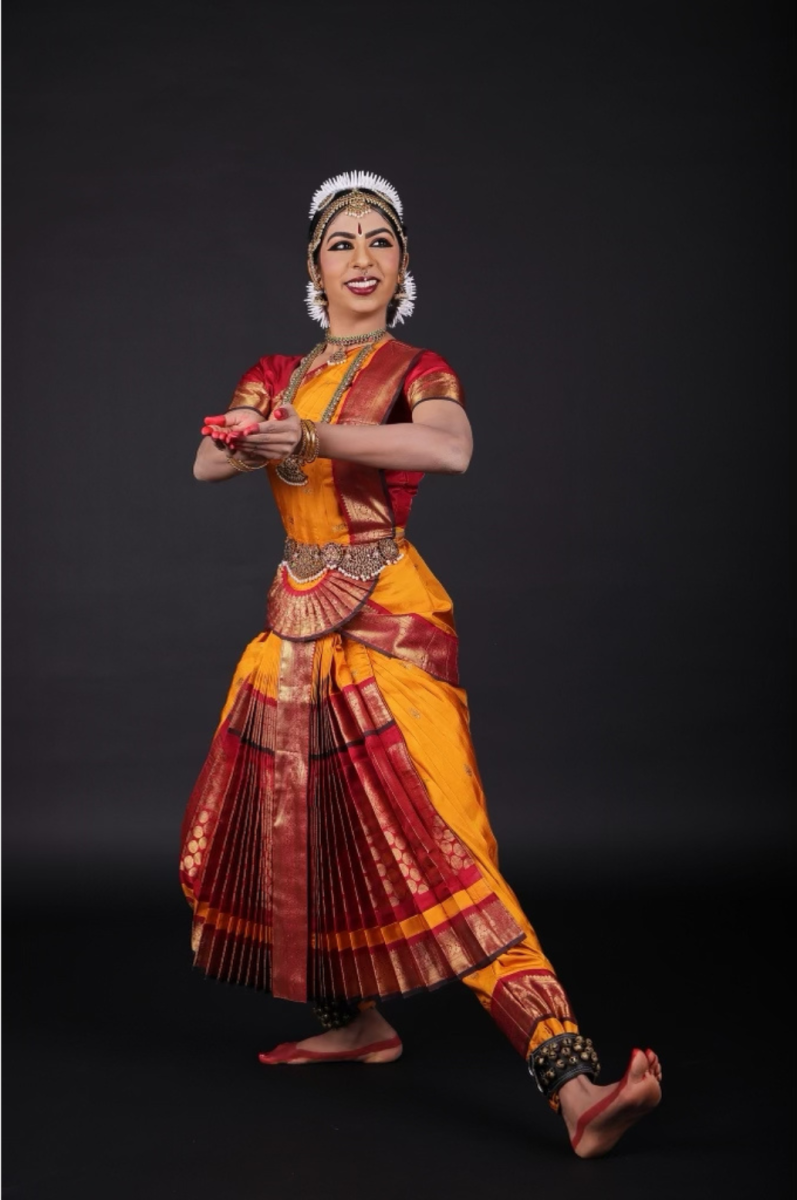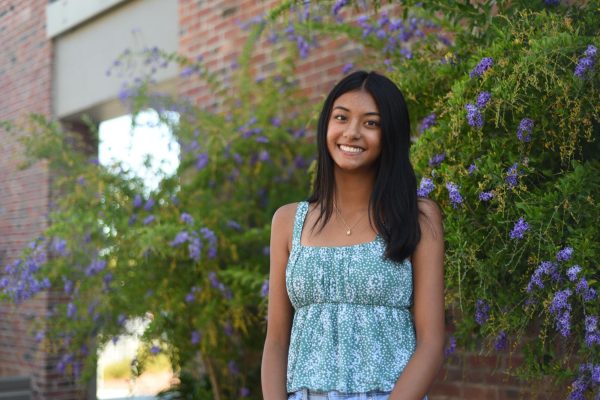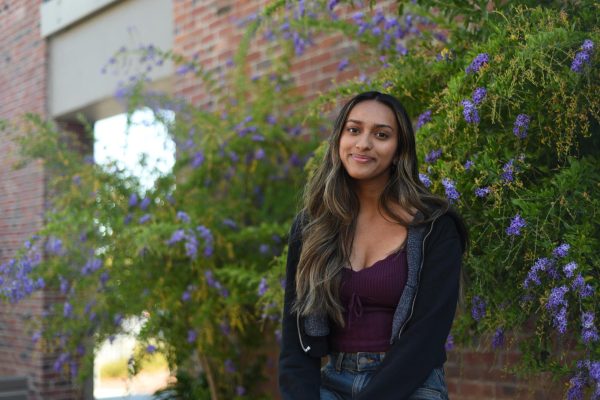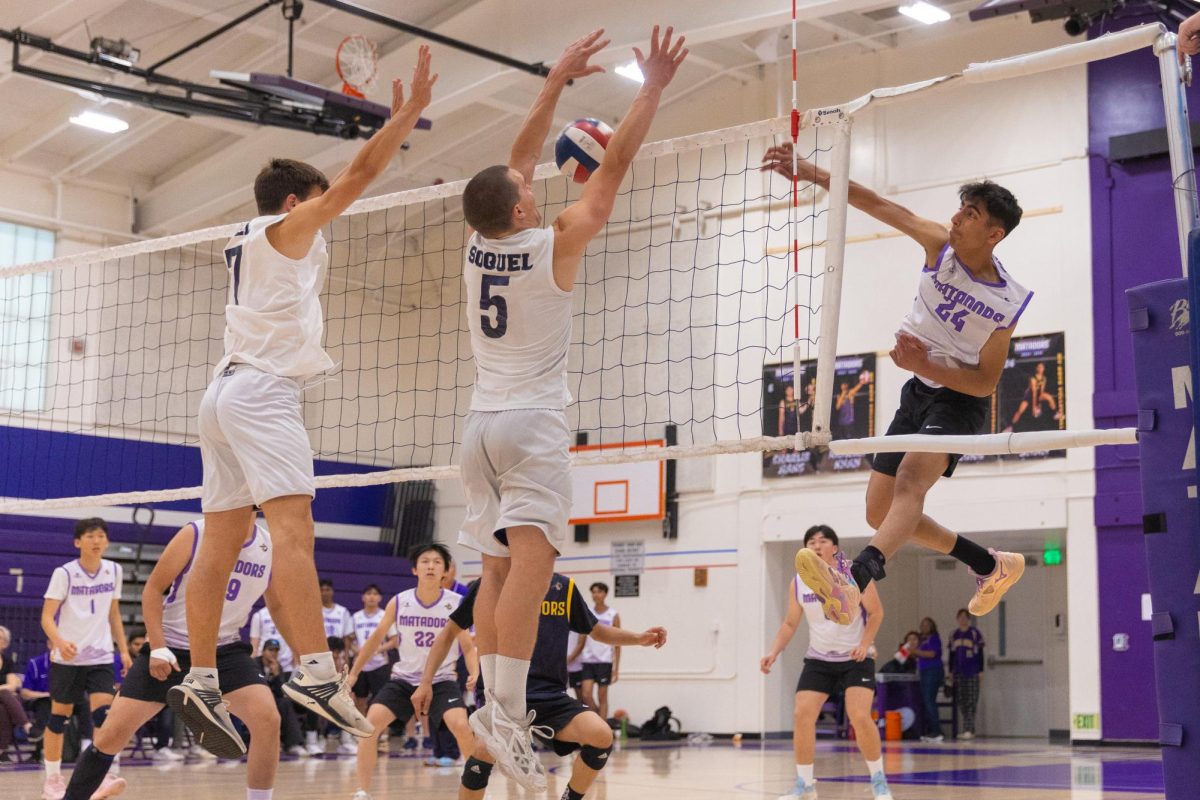For the past nine years, sophomore Maya Kumar has been taking bharatanatyam classes for three hours every week to master her dance. Bharatanatyam is one of the oldest dance forms in the world, and its basics are deeply rooted in Indian culture and the Hindu religion. Since her start in bharatanatyam when she was 6 years- old, Kumar has spent over 1,400 hours practicing bharatanatyam, leading up to her arangetram on Sept. 30.
Ascending the stage, or arangetram, is a rite of passage for bharatanatyam students. The preparations for this three-hour performance are intense, and require a significant amount of a lot of mental and physical strength. Founder and artistic director of Shri Krupa Dance Company, Vishal Ramani, believes that an arangetram is not just another dance — it is a journey that takes time and commitment to master.
Although Kumar started practicing for her arangetram in the past year, her performance will encompass everything she has learned from almost a decade of bharatanatyam. When Kumar first joined dance class when she was 5-years-old, it was because her mother, Jaya Krishnamoorthy, enrolled her in bharatanatyam classes in an effort to help Kumar stay connected to her culture.
“We are a little bit detached from the music and the dance and the vibes that we’ve grown up day in and out with, this was a way of staying connected to our origin,” Krishnamoorthy said. “Enrolling [Maya] in a dance class felt like she [was] learning physically, [through] active good exercise, but she is also learning music and rhythm, and through this she’s learning quality and the connection [to India].”
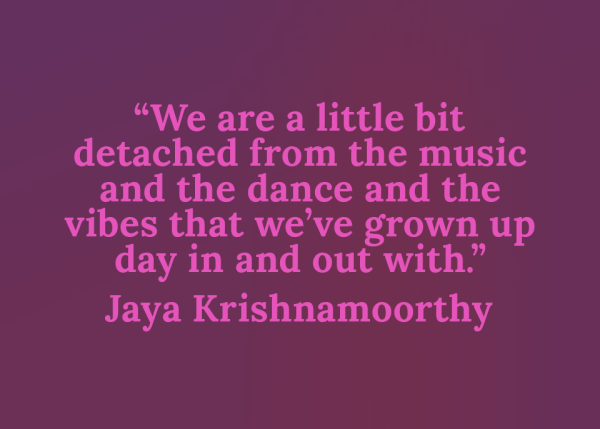
Growing up in a small town in India, opportunities to take dance and music lessons weren’t always as accessible for Krishnamoorthy, so she felt it was important for her to give her daughter the experiences she didn’t have.
“I didn’t want to force it on her, but I wanted to see [if] this [was] something that I could at least give her an opportunity to do,” Krishnamoorthy said. “[I wanted] my daughter to go through that process.”
Ramani believes bharatanatyam is not just about the dance, but also about learning all the religious stories and folklore affiliated with all of the different dances, making it a great source to deepen one’s connection to India.
“It’s understanding [the] whole entire dance format, so [that] you’re tuned into it 24/7,” Ramani said. “A lot of commitment [goes into an arangetram] because you [have to] cultivate the muscle memory.”
While Kumar’s journey in bharatanatyam has been mostly positive, it hasn’t always been easy. Kumar was faced with an Iliotibial band injury from playing basketball, which affected an upcoming bharatanatyam performance she had.
Due to the elusive nature of the wound, Kumar did not know when it would heal and when she would be ready to get back into dance. Though it was not fully healed, she was still able to complete her dance with her injury.
“It was so hard to see her having to go through [her injury] and still be ready to do the performance,” Krishnamoorthy said. “I was really impressed by her determination and grit to stay focused and get all of these things done.”
While she was able to recover from the injury in a couple of weeks, Kumar acredits her ability to bounce back and keep practicing to her mother.
“If I’m ever out there working myself a little bit too hard, she’ll remind me to just take a step back,” Kumar said. “I think that’s been really valuable.”
Through all of the hard work she has put in over the last nine years, Kumar says she is ready and excited to share what she accomplished throughout her bharatanatyam journey with her friends and family. She explains how her confidence levels as a dancer have risen since she began preparing over the past few months.
“I am capable of doing it, [and] when I started, I didn’t think I had the same confidence that I do now,” Kumar said. “It’s something that is really special to me since I’ve been learning for so long, [and] I really want to finish the journey that I’ve started.”





